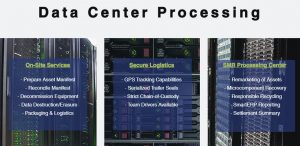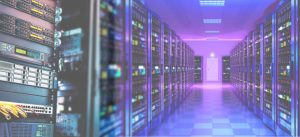Facebook users upload 136,000 photos, make 510,000 comments on posts, and 293,000 status updates every minute. This creates a tsunami of company and personal information that is stored in hundreds of datacenters around the world.
Alex Cummings
Some people may believe that their PC, mobile phone or tablet houses all of your e-mail and social media information. This is correct to a certain level—like browsing history and passwords—but the core of your information on these accounts is housed in mega-datacenters around the world. It is estimated that over 45 percent of the entire world’s population uses some form of social media account and just over 50 percent have an e-mail account. Facebook has close to 20 datacenters around the world to handle their flood of data from users.
Social Media Usage
Staggering statistics on social media usage according to Hootsuite Digital 2019[1] are:
- 3.5 billion unique users use social media which is 42 percent of the world’s population
- 2.27 billion active Facebook accounts
- 1.19 billion active YouTube accounts
- 1.5 billion active WhatsApp accounts
In 2014, Facebook stated that its company processed close to 600 terabytes of data daily and YouTube reported they process around 300 hours of new video uploads every minute. For Facebook, this includes 136,000 photos, 510,000 comments and 293,000 status updates occurring every minute on their platform[2].
Facebook also has mounds of data that they collect through user behavior tools including tracking cookies and analyzing user behavior through likes and shares on its platform. All this data is stored on Facebook’s servers to create a better user experience as Facebook caters to what information its users see based upon their past behaviors, page likes, comments and cookie/browsing history from the internet.
E-mail Usage
Regarding e-mail accounts, Statista[3] estimates a rapid growth in e-mail accounts from 3.9 billion in 2019 to over 4.3 billion by 2023. They also estimate that 281 billion emails were sent in 2018 worldwide.
All this data creates an ever-growing mountain of information that needs to be stored somewhere. Facebook currently has 12 data centers across the world that amounts to 15 million square feet[4]. All of these datacenters will need to be decommissioned within a couple of years to bring in the latest and greatest technology regarding servers.
Datacenter Decommissioning
Datacenter decommissioning can be a complex situation because you cannot simply turn off the datacenter. The two most common ways a datacenter decommissions is to have a new facility built and running before they decommission their older facility. This creates uninterrupted service to the end-user while allowing for a complete decommission of their old facility. Another way is to decommission half of the datacenter at a time, half of the servers and racks are removed then new ones are installed and turned on before the other half of the datacenter is decommissioned.

Most datacenters require that their data-bearing devices including hard drives are shredded onsite with one of their employees there for verification of physical destruction. This requires mobile shredding units that are capable of shredding thousands of hard drives per day. Once the physical destruction of the hard drives is completed, the ITAD company will issue a Certificate of Destruction to the datacenter verifying that all hard drives have been destroyed. Some of the most privacy obsessed organizations may require that their hard drives are wiped, degaussed, and shredded onsite to ensure complete data destruction.
As this is taking place, a team of white-glove experts are removing the servers and racks from the datacenter and transporting them to their ITAD processing facility. The ITAD company will breakdown the servers to determine their disposition path, if the server is above the tech cut line and in working order, it will be resold. If the server is below the tech cut line or does not work, it will be responsibly recycled in accordance with R2 standards.
ITAD providers will also remove HVAC units and cooling systems, computers, generators, phones, networking equipment including routers and switches, and thousands of feet of cables and wiring. Other items may include printers/copies/fax machines, storage devices, telecom equipment, televisions, computer peripherals, monitors, and more.
The resale of servers, racks, and other equipment creates a reverse revenue stream for the datacenter to recoup some of its money back during the disposition process. It also creates a more circular economy as their old equipment is being reused increasing the product’s lifecycle.
Transportation is a major factor in datacenter decommissioning project especially if the server racks are going to be resold. Your ITAD provider should include safe and secure transportation measures for your equipment. Sometimes, the server racks are even transported inside wooden crates to ensure their safety. The ITAD provider should visit the datacenter at least once to discuss all options and, create a manifest or assets, and develop the proper decommissioning statement of work.
Rest assured that during the decommissioning process, that your data from your e-mail and social media accounts are properly handled and destroyed on-site. This ensures the privacy of users and does not let the hard drives fall into the wrong hands.
Alex Cummings creates, implements and executes the global marketing and public relations strategy for SMR Worldwide (formerly Smart Metals Recycling) headquartered in Statesville, NC with four additional locations in the United States. Alex executes SMR’s mission on their website, social media, market research, press releases, e-mail campaigns, partnerships, blogs, sales presentations, along with graphic design and content management. He spent the last 15 years in various client services and marketing roles with companies, such as World Racing Group, World of Outlaws, Roush Yates Engines and SRI Performance before finding his purpose in the ITAD and Electronics Recycling Industry.
SMR Worldwide’s mission is “Transforming yesterday’s technology into the supply chain of tomorrow” as they become the world’s most disruptive vision for last-mile IT asset management. SMR partners with the world’s leading manufacturers, highest volume IT distributors and most privacy-obsessed enterprises. Their focus is to deliver the best turnkey ITAD programs from end-to-end while protecting our client’s brand and reputation while minimizing environmental impacts. In the summer of 2019, SMR was placed on the Inc. 5000 list at #1563 in just its 5th year of operation. They are creating new solutions all the time, adding not only new service locations but new service capabilities. For more information, call (704) 873-8878, e-mail at [email protected]or visit www.smr-worldwide.com.
Notes
